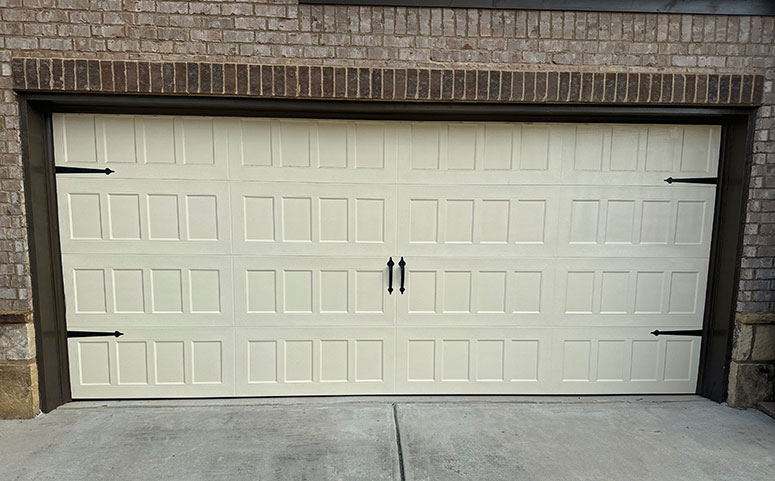Common Garage Door Issues and Just How to Repair Them
Garage doors are necessary for both security and benefit, yet they typically offer a range of usual concerns that can frustrate house owners. While some problems may appear straightforward to deal with, others may call for a much more nuanced understanding of garage door auto mechanics.
Noisy Garage Door Operation
A noisy garage door operation can be a substantial resource of annoyance for homeowners, commonly indicating underlying mechanical problems. Such interruptions may originate from different causes, including worn-out rollers, loosened equipment, or not enough lubrication. Recognizing the source of the noise is vital for reliable resolution.
One typical reason for too much noise is the presence of corroded or damaged rollers. Gradually, these components can weaken, bring about grinding or squealing sounds as the door actions. Routine evaluation and replacement of these rollers can considerably reduce sound levels. Additionally, loose bolts or screws in the door mechanism can produce rattling noises throughout procedure. Tightening up these bolts ensures a much more stable and quieter activity.
One more adding factor is inadequate lubrication of the door's relocating components. Using a high-quality lubricating substance to the tracks, springs, and rollers can considerably reduce friction and noise. Property owners should execute this maintenance occasionally to maintain ideal performance.
Lastly, the garage door opener might likewise create sound as a result of its age or mechanical concerns. If the sound lingers despite addressing various other factors, consulting a specialist for a thorough assessment and possible repair may be needed.
Door Won't Open or Close
Experiencing a garage door that won't open or shut can be incredibly frustrating and typically signals a breakdown within the system. Numerous factors can contribute to this problem, and identifying the origin cause is necessary for effective resolution.

Next, check the safety sensing units located at the base of the door. These sensing units can come to be misaligned or blocked by particles, stopping the door from operating correctly. Clean the sensors with a soft fabric and ensure they are lined up.
In addition, the garage door's interior parts should be assessed. Issues such as a broken spring, damaged rollers, or a damaged opener can restrain activity. If any components appear to be harmed, it might be recommended to speak with an expert for repair work.
Misaligned Tracks
(Superior Support)Misaligned tracks can significantly interfere with the smooth operation of a garage door, leading to functional failures such as irregular motion or complete immobilization. This problem generally emerges because of a selection of variables, including deterioration, accidental impacts, or incorrect installment. When the tracks are misaligned, the rollers can stagnate openly, which not just strains the motor yet also positions safety risks.
To determine misalignment, visually check the tracks for voids or unequal spacing. If you see any type of discrepancies, it is essential to attend to the concern promptly - garage door service. Begin by loosening up the screws that secure the track to the wall, enabling for modifications. Carefully tap the track back right into its right position making use of a rubber club or a similar device, guaranteeing it is straight and degree.
Once the positioning is fixed, retighten the screws to click reference protect the track. For a more permanent solution, consider reinforcing the tracks with additional brackets. Routine upkeep, consisting of cleansing the tracks and making sure rollers are in good condition, can prevent future misalignments. By dealing with misaligned tracks without delay, you can recover the functionality of your garage door and enhance its longevity.
Broken Springs
Amongst the various components of a garage door system, busted springtimes are just one of one of the most usual problems that can dramatically hamper its capability. Garage door springtimes are vital for stabilizing the weight of the door, enabling for smooth opening and closing. When a springtime breaks, it can lead to a door that is tough to operate or, in many cases, completely inoperable.
There are two major sorts of springtimes: torsion springs, which are mounted over the door, and extension springtimes, found on either side. Signs of a busted spring include a door that will not open, a noticeable void in the spring, or a loud sound throughout procedure. Attempting to run a garage door with a busted springtime can cause additional damage to the door or the opener.
Fixing damaged springs is not a DIY project; it requires specialized tools and know-how because of the high stress included. It is advisable to speak with a specialist service technician that can securely replace the springtimes and guarantee the door is correctly balanced. Routine upkeep and examinations can help avoid spring failures and extend the life-span of the garage door system.
Push-button Control Issues

If the remote still fails to run, inspect the garage door opener to make certain that its sensing units are clean and unobstructed. Dust, debris, or misalignment might hinder the signal transmission between the remote and the opener.
Interference from various other digital tools can additionally hinder remote capability. Ensure that neighboring tools, such as cordless routers or cordless phones, are not creating disruptions. garage door service. If disturbance is suspected, attempt moving these tools better far from the garage door opener
In many cases, the remote might require to be reprogrammed. Speak with the manufacturer's guidelines to reset the remote and synchronize it with the garage door opener. If all else falls short and the remote remains to malfunction, think about speaking with a professional specialist for a comprehensive evaluation and possible substitute of the remote or opener.
Verdict
(Quick and Easy)In summary, usual garage door problems can dramatically influence performance and safety and security. Aggressive maintenance and timely repair services can make sure optimal performance and durability of garage doors.